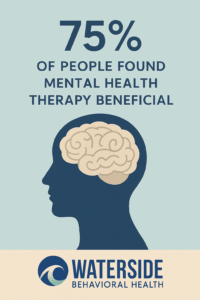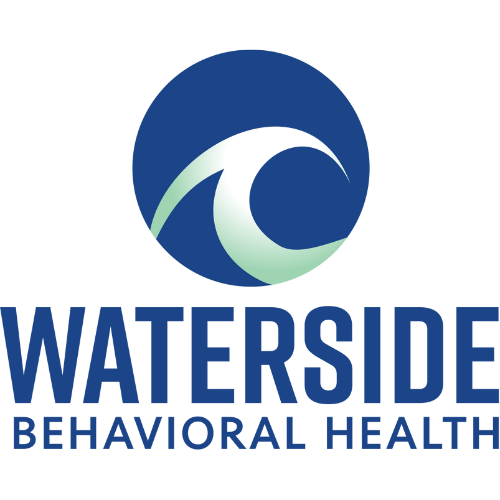When you’re used to living by instinct, emotion, and edge… the idea of therapy can feel like walking into a room that might flatten you. If you’ve ever worried that getting help means losing the most electric parts of who you are, you’re not alone—and you’re not wrong to feel that way.
But here’s the thing: real mental health therapy doesn’t take your fire. It helps you hold it without getting burned.
What Exactly Is Mental Health Therapy?
Let’s strip the buzzwords away. Mental health therapy is any form of talk-based treatment designed to help you feel better emotionally, mentally, and behaviorally. It’s not just for crisis moments—it’s for sorting out the mess, the numbness, the overload, or the low hum of “something’s not right.”
Therapy doesn’t erase your edges or flatten your depth. The best types honor who you already are—and help you navigate life with more ease and less emotional whiplash.
At Waterside Behavioral Health, we offer several evidence-based types of mental health therapy in Massachusetts, each tailored to your needs, pace, and personality.
Individual Therapy: One-on-One Space to Unpack
This is where most people start—and where many come back to when life feels loud. You meet regularly with a licensed therapist to talk through whatever’s showing up for you: stress, depression, identity questions, relationship dynamics, creative blocks, panic, grief, or simply the feeling that you’re not okay… even when everything “should” be fine.
There’s no one-size-fits-all script. Some sessions are structured; others flow like conversation. Over time, this space becomes a kind of mirror—one where you get to see yourself more clearly and compassionately.
For creatives, empaths, and internal processors, individual therapy often becomes a place to unmask, reconnect, and reclaim parts of self that were silenced by pressure, perfectionism, or pain.
Cognitive Behavioral Therapy (CBT): Untangling the Thought Loops
CBT is one of the most researched forms of therapy—and it’s popular for a reason. It’s practical, structured, and focuses on identifying unhelpful thought patterns that shape how you feel and act.
If your mind tends to spiral—turning one anxious thought into a dozen worse-case scenarios—CBT can help break that cycle. It teaches you how to question those thoughts, challenge their accuracy, and replace them with ones that are more grounded, more helpful, and more you.
But here’s what matters: CBT doesn’t erase emotion. It simply gives your brain some tools for understanding what it’s doing—and why it matters.
Psychodynamic Therapy: The Deep Dive Into Your Story
Some wounds aren’t obvious. Some patterns go back decades. And some parts of us are hard to name until we start seeing them show up again and again in our relationships, fears, and identity.
Psychodynamic therapy is all about exploring the “why.” Why does this keep happening? Why do I react this way? Why do I feel like two different people in the same body?
It’s a slower, reflective process—but for those who think in story, metaphor, and meaning, it can feel like finding the map to your own emotional architecture.
Dialectical Behavior Therapy (DBT): Emotion Management for the Deep Feelers
If you feel everything deeply, react strongly, and sometimes struggle to recover after emotional waves—DBT was made with you in mind.
Originally developed for people with high emotional sensitivity, DBT teaches real-world tools like:
- How to calm yourself when everything feels like too much
- How to stay grounded during conflict or stress
- How to express what you need without blowing up or shutting down
It’s not about turning off your feelings. It’s about creating enough space inside those moments to respond instead of explode.

Group Therapy: Honest Connection Without the Mask
For a lot of us—especially the creative or socially magnetic types—being around others can feel like performance. Even when we want connection, it’s hard to stop scanning the room or shape-shifting to keep the peace.
Group therapy is different. It’s a place where the masks come off.
You meet with others who are also navigating mental health challenges—depression, anxiety, trauma, identity shifts, or life changes—and learn how to connect without needing to be anything other than real.
Many clients describe group therapy as “weirdly comforting,” even if it’s awkward at first. Over time, it becomes a reminder: You’re not alone. And you’re not the only one who feels the way you do.
Creative Therapy Options: When Words Aren’t Enough
Talk therapy works for many—but not everyone processes with words. Some people heal through expression, movement, or creation. That’s why many mental health programs offer creative therapy options like:
- Art therapy
- Music therapy
- Movement-based approaches
- Expressive writing groups
These modalities don’t replace traditional therapy—they expand it. They offer another way to access what’s under the surface and give it shape, color, rhythm, or voice.
If you’ve ever said, “I don’t know how to talk about it—but I feel it,” these options might be a powerful addition.
Frequently Asked Questions About Mental Health Therapy
How do I know which therapy type is right for me?
You don’t have to know. That’s what the first few sessions are for. A good provider will talk with you about your needs, your comfort level, and what you hope to get from therapy—and then make recommendations from there.
Is therapy only for people with a diagnosis?
Not at all. Many people seek therapy because they’re stressed, overwhelmed, going through a transition, or just feeling emotionally off. You don’t need a diagnosis to benefit from therapy. You just need curiosity, willingness, and a little courage to start.
What if I try one type and it doesn’t work?
Totally normal. Therapy is not one-size-fits-all. It’s okay to try something and realize it’s not your fit. That doesn’t mean therapy “isn’t for you”—it just means you haven’t found the right match yet. Many people try more than one approach or therapist before they find the one that clicks.
Can I do more than one kind of therapy at the same time?
Yes, in many programs—including ours—you can combine approaches. For example, you might do individual therapy with a CBT-trained therapist and also attend a DBT-informed group. Or you might explore creative therapy alongside psychodynamic work. It depends on what helps you the most.
Is therapy confidential?
Yes. With rare legal exceptions (like if someone is in immediate danger), therapy is private. Your therapist won’t share what you say with others—not family, not employers, not anyone. That safety is part of what makes it work.
You Don’t Have to Flatten Yourself to Heal
The fear makes sense. When mental health therapy is presented as something “normal people do to become more normal,” it can feel like a threat to anyone who’s ever built beauty or identity out of the mess.
But real therapy doesn’t erase you. It helps you access the full, rich, complicated version of yourself—without needing to collapse under the weight of it all.
You don’t lose your edge. You learn how to hold it better.
Ready to Talk?
Call 774-619-7750 or Contact Us to learn more about our Mental Health Therapy services in Plymouth County, MA.




